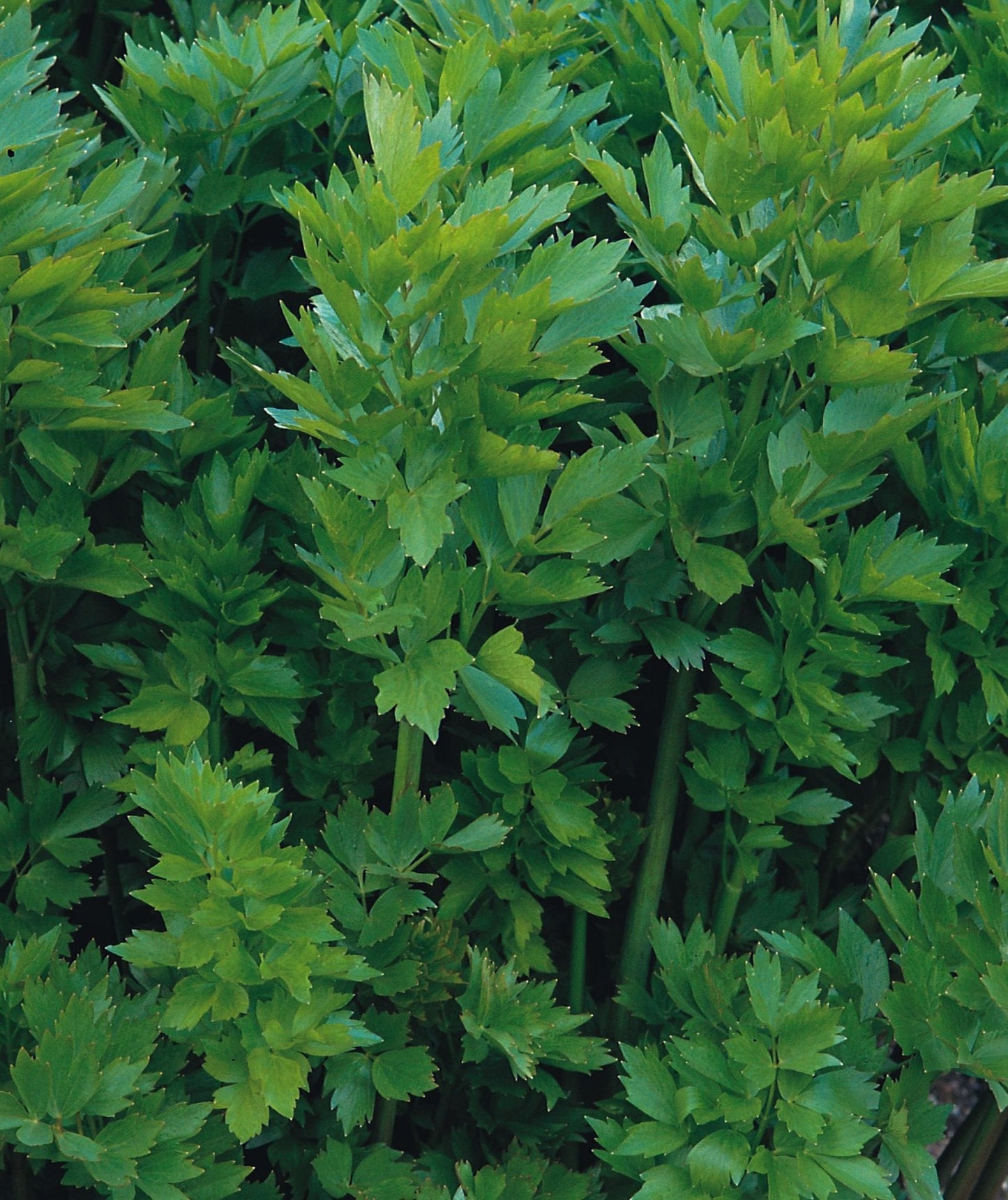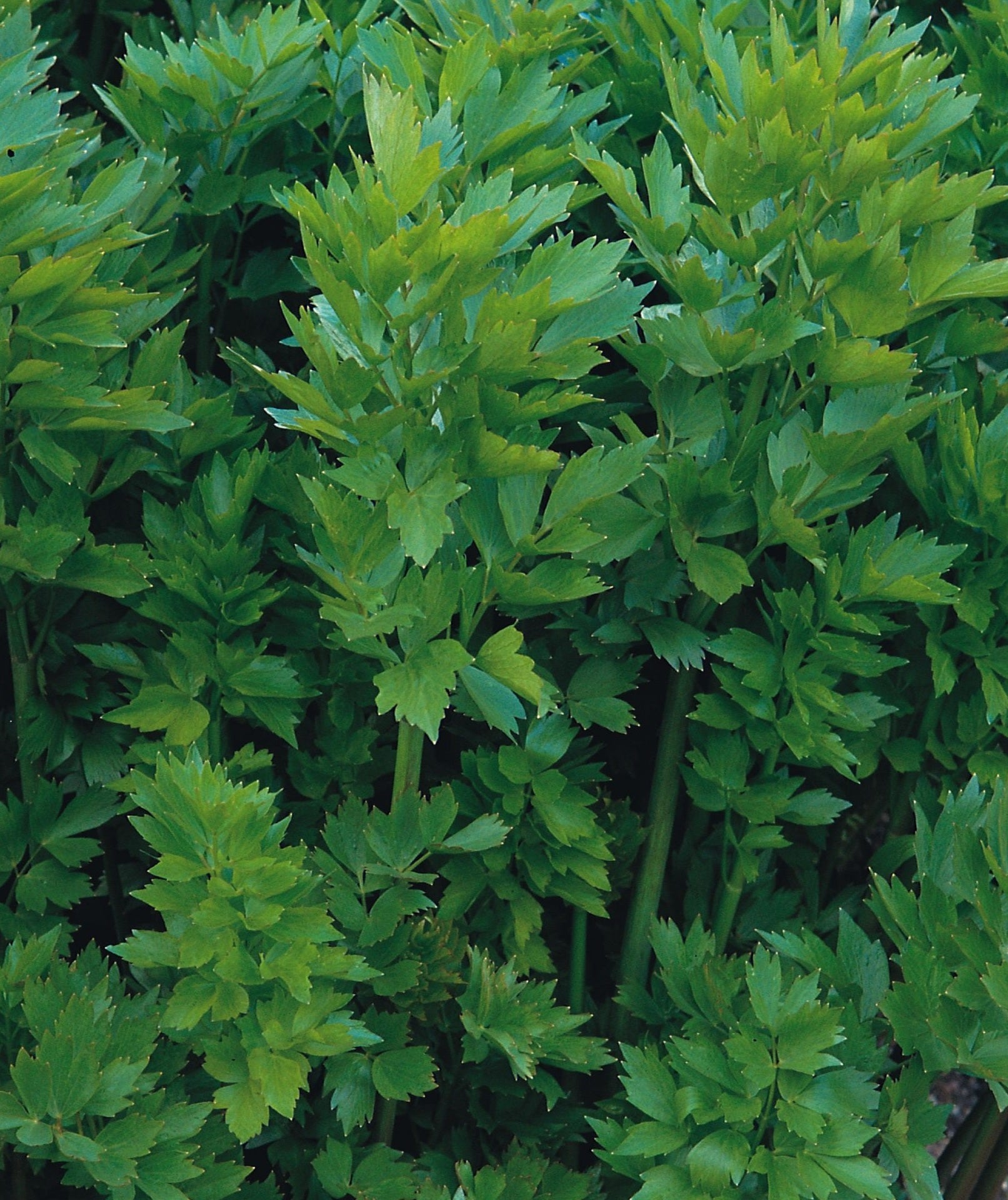Lovage
Lovage
Packet Size: 25 seeds
Couldn't load pickup availability
Lovage, Levisticum officinale, is one of those quietly brilliant plants that deserves a spot in every garden – or even just a pot on the patio. Though it can grow tall (up to 2m!), ours stays compact in a pot, usually around 75cm.
Don’t be fooled by its good looks – those lush green leaves are more than just pretty foliage. Lovage is edible from root to tip, adding a punchy, celery-like flavour to soups, stews, and stocks. It’s also a real hit with pollinators and helpful garden visitors like ladybirds and lacewings.
A beautiful, hardworking all-rounder.
Add lovage to your garden today – your cooking (and your bees) will thank you!
Scroll down to discover more
SPRING:
Sow the seeds in trays or plugs, depth up to 10mm. Bottom heat of 15ºC is helpful. When large enough to handle pot on strongest seedlings. Harden off then plant 45-60cm apart or a specimen in a container: remember Lovage can grow 1-2m tall!
SUMMER:
Don’t cut too much in the first year, allow plants to establish. From the 2nd year clip to encourage fresh young growth.
WINTER:
Cut back so stems don’t flop, fully hardy, no need to protect. Leave some hollow stems for ladybirds to overwinter in.
TIP – for the best flavoured leaves pick them before the plant flowers. Freeze the leaves until you want to use them.
📌USES:
WILDLIFE FRIENDLY
- The umbrella-like flower heads attract all sorts of pollinators, especially Solitary Bees, which are excellent for your veg crops.
- Hoverflies come for the nectar—and their larvae will help hoover up aphids and other soft-bodied pests.
- You may spot tiny parasitic wasps, useful garden allies that lay eggs in pests like caterpillars, sawflies and aphids.
- Soldier beetles (nicknamed Bonking Beetles for obvious reasons) love the flowers. Their larvae live near the base of plants, feeding on slugs, snails and other small pests.
- Lovage is a magnet for beneficial insects and supports natural pest control throughout the season.
EDIBLE:
Caution - you should not consume Lovage whilst pregnant or if suffering from kidney disease (it has diuretic properties)
- Rich celery like flavour for stews, soups and casseroles; pairs well with chicken & pork
- young leaves in salads
- use sparingly as strong flavour, can substitute for parsley or celery in recipes but in smaller quantities
- add to fermented pickles
- lovage can be dried and frozen to be used whenever you feel like it
- Edible from root to tip including the seeds: use as you would fennel seed in tea, curries or stews.
HISTORICAL
- Once upon a time a hair-wash or rinse made with a lovage infusion was thought to be an attractant & an aphrodisiac
- As a vegetable it has fallen into disuse but in the past leafstalks and stem bases were formerly blanched like celery
- Although lovage has been grown in monastic & cottage gardens for centuries it is not a native plant, it originates from the Mediterranean area
- No great claims are made about its herbal properties, rather it is thought its popularity had a lot to do with its pleasing aromatic odour!
OTHER
- Dried leaves make an aromatic tea
- Lovage infusion is a refreshing addition to bath water
- From the 1300’s Lovage has been used for indigestion, heartburn, stomach bloating, intestinal gas, irregular menstrual periods, sore throat, boils, yellowed skin (jaundice), dry & spotty skin, malaria, fluid around the lung (pleurisy), gout, joint pain (rheumatism), and various headaches: further research on the efficacy is required
Caution should be exercised: you should not consume Lovage for any purpose whilst pregnant or if suffering from kidney disease (it has diuretic properties)
Please note: we do not promote the medicinal use of plants – guidance and information should be sought elsewhere. Always seek professional medical advice and consult trusted sources for health-related guidance.

Collapsible content
Sowing
- Mar
- Apr
- May
Harvesting / Flowering
- Jun
- Jul
- Aug

